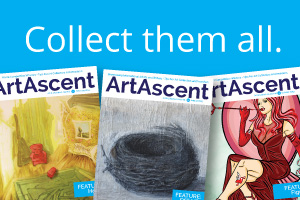Collecting in the postmodern context
As contemporary art forms challenge traditional methods of productions, collectors are faced with how to purchase and display hard-to-show-artwork. Performance art, video art, and large-scale installations are at the center of the discussion on the topic, as all three formats are often well-represented in today’s galleries, institutional shows and even at art fairs. Many collectors are interested in acquiring these pieces, but how do you hang a performance on the wall?
Performance Art
Traditionally, performance art has been sold and archived through photography and video. Marina Abramovic may be best-known for her feats of endurance and personal expression, but it is the photographs of her performances that sell in the marketplace. Now, artists like Tino Sehgal have revolutionized the way performances can be commoditized by selling instructions to how the pieces need to be performed. Granted, not everyone can hire someone to continuously perform a piece on loop in their living room, so there is always the question of what the purpose of acquiring such work is. Instead of buying an object, the purchaser instead owns the rights to the piece’s concept. The benefit? A number of exciting artists are producing work in this medium, and as museums are becoming more interested in exhibiting and acquiring performance pieces, many find this to be a solid investment.
Video Art
Video art is a bit easier to collect than performance art since a purchaser is getting a piece of work more tangible than a concept. That being said, the logistics of displaying video art are a bit more complicated than hanging a painting. Typically, collectors will receive the video in a playable format – once tapes, then DVDs, now often digitally – which can then be displayed on a device of their choosing. Some dealers who specialize in new media provide video work to collectors on limited-edition flash drives, which sometimes are a work of art themselves.
Installation Art
Installation art again gives purchasers a tangible object to acquire, but displaying and storing the work is a challenge. Because of their size and display requirements, large-scale and site-specific installations are often collected by institutions with the resources to accurately recreate the original pieces. Some gallery owners embrace this, knowing that most collectors will not purchase installations, but will rather seek out smaller works by the artist, and focus instead on getting larger pieces into museum collections. However, others are creatively working with artists to break down installations into individual pieces that are then sold off to collectors. This practice is a bit controversial, as critics believe it weakens the intention of the original piece.
Artists like Sol LeWitt creatively solved the issue of selling ephemeral installations like wall paintings by creating instructional guidelines for reproducing each work, which constituted the collector’s “art object.” Similar to purchasing performance art, the collector owns the rights to the work and is the only person who can recreate it authentically.
It remains to be seen what new boundaries will be pushed in contemporary art, and collectors will likely find themselves faced with new challenges in displaying purchased work. That being said, the difficulty of showing a piece of work shouldn’t be a discouragement from acquiring it; there are new ways of sharing art thanks to technological advances, and many dealers are finding new ways to assist collectors with their new pieces.
By Rachel Cohen, LCAT, ATR-BC








